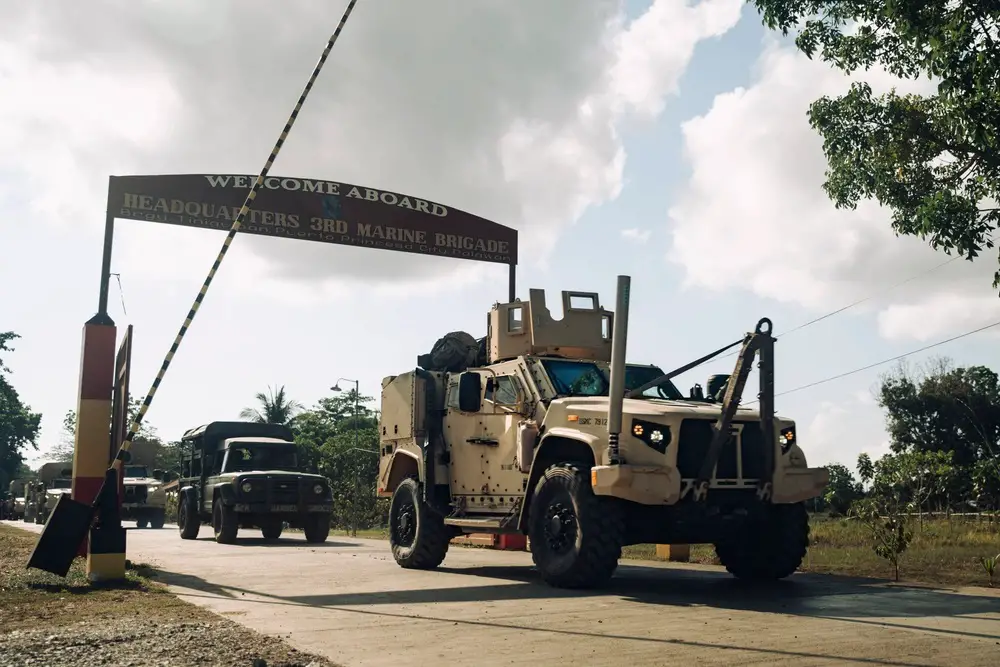Elements of the 15th Marine Expeditionary Unit and the Philippine Marine Corps’ 3rd Marine Brigade conducted the largest combined military convoy to date on Palawan Island, Philippines, May 15, 2024. The convoy consisted of four KM450s and two KM250 Philippine Marine Corps trucks, eight U.S. Marine Corps Joint Light Tactical Vehicles and two Ultralight Tactical Vehicles assigned to Combat Logistics Battalion 15 and Battalion Landing Team 1/5, and a force of more than 80 mounted personnel from all the participating units. The convoy was conducted as part of Archipelagic Coastal Defense Continuum, a series of bilateral exchanges and training opportunities between U.S. Marines and Philippine Marines aimed at bolstering the Philippine Marine Corps’ coastal defense strategy while supporting the modernization efforts of the Armed Forces of the Philippines.
“This is the first time we have done a convoy like this with our allies in Palawan, especially over this distance,” said U.S. Marine Corps Capt. Chance Hogan, a combat engineer officer and a lead convoy planner for CLB-15. “For it to be so successful and conduct such a large integrated convoy makes us excited for us to continue to build upon this event in the future.”

As the largest combined tactical convoy to date, the motorized movement provided the combined forces a valuable rehearsal of an integrated mobile defense supporting ACD strategy. After completing all mission planning, coordination, and pre-combat inspections together at Philippine Marine Base Camp Rodolpho, the vehicles departed and traveled more than 30 miles south along Palawan’s eastern coast using roads and highways to arrive at Kamuning Beach, simulating a rapid response for a mobile coastal defense. Once near their objective, Philippine and U.S. Marines dismounted, set security and used small unmanned aerial vehicle systems to reconnoiter the area before guides led the force into positions for blocking an enemy amphibious landing.
The combined force developed an integrated coastal engagement area, integrating obstacles with direct and indirect fires weapon systems entrenched in concealed positions. Meanwhile, CLB-15 Marines sustained the force with fresh water using a Lightweight Water Purification System, burying the system’s hoses under the sand to conceal them as they entered the waterline. In the week leading up to the convoy, Marines from CLB-15 conducted detailed road and bridge engineering surveys to confirm the convoy vehicles would not impact any of the local infrastructure. The 15th MEU is under the command and control of Combined Task Force 76/3, employed by U.S. 7th Fleet to operate with allies and partners in preserving a free and open Indo-Pacific.













